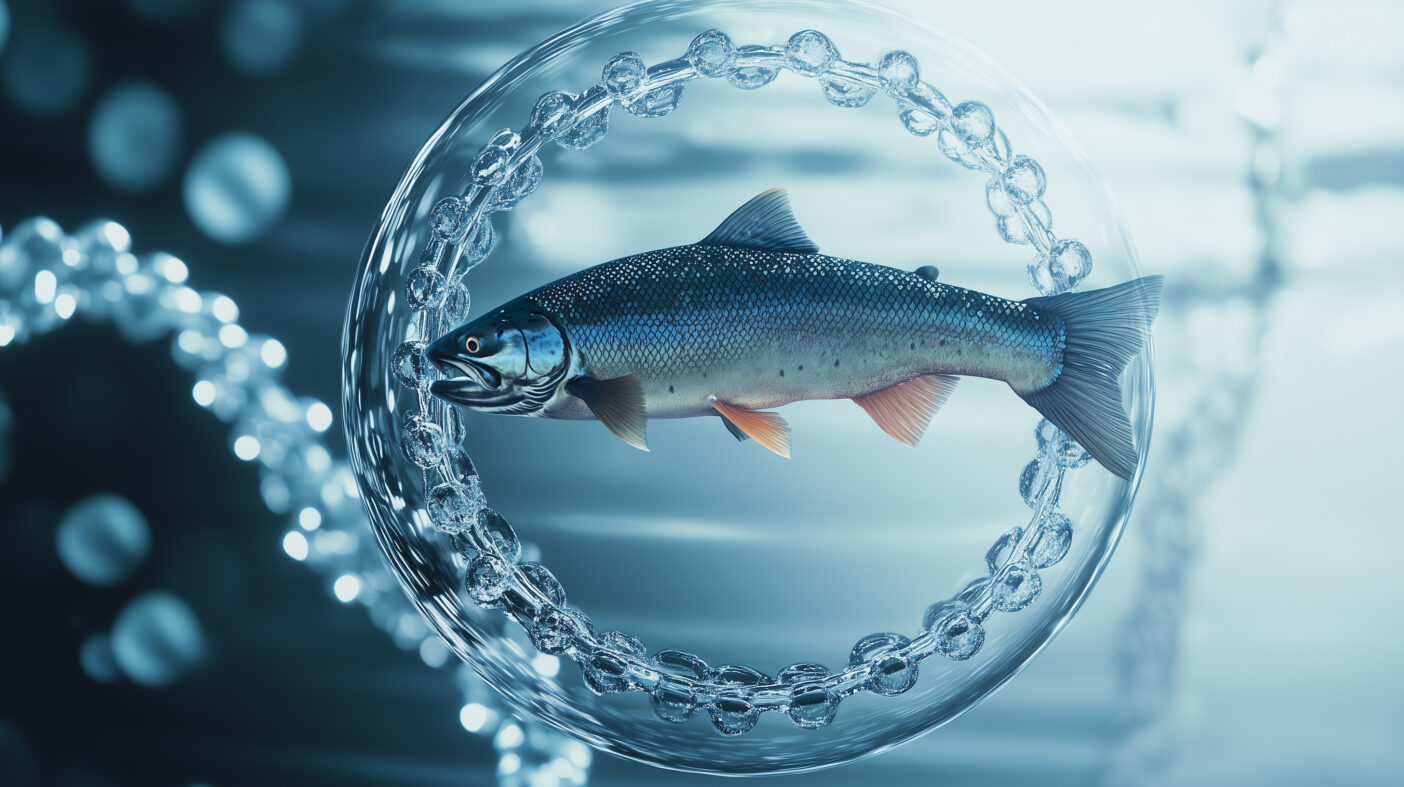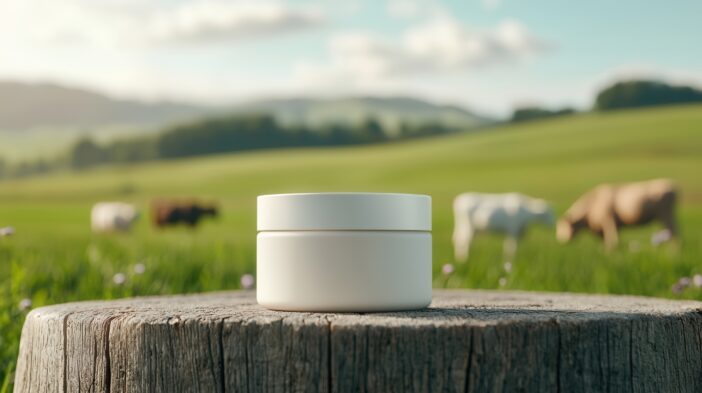Animal-based active ingredients: Why they are making a modern comeback in cosmetics

Introduction: The renaissance of natural powerhouses
For thousands of years, people have been refining their skincare with honey, milk and other natural ingredients. Then synthetic alternatives came along and many animal-based active ingredients disappeared almost completely from the shelves. But today, the industry is experiencing a ‘reload’: advances in biotechnology, better standards for animal welfare and a growing desire for authentic natural substances are bringing these forgotten classics back into the spotlight. This article explains why animal-based ingredients will be back in vogue in cosmetic products in 2025, how they are obtained, what opportunities and limitations they offer, and what high-tech variants already exist.
What are animal-based active ingredients in cosmetics?
This collective term refers to all functional ingredients that originate wholly or partly from animal sources, such as honey from bees, collagen from fish or PDRN from salmon seeds. They provide proteins, enzymes, lipids and other biomolecules that are often difficult to replicate with plant-based alternatives. When used correctly, they offer noticeable skincare benefits such as moisture retention, barrier protection and anti-ageing effects.
Origin – between traditional harvesting and modern biotechnology
Animal-based active ingredients in cosmetic products are now obtained in two ways:
- Traditional extraction
o Example: honey. Beekeepers harvest excess honeycombs, extract the honey and then filter it.
o Example: beef tallow. A by-product of food production that is purified, deodorised and refined.
- Cruelty-free biotechnology
o Collagen can be obtained through fermentation with yeast or plant cells. Only the gene sequence of the collagen is needed, not the animal itself.
o PDRN is isolated from salmon DNA fragments, often from breeding waste that would otherwise be disposed of.
Both methods open up new ways of using animal-based active ingredients in cosmetics in an ethical, sustainable and consistent manner.
Brief profiles of typical animal-based stars
| Active ingredient | mini profile & cosmetic benefits |
|---|---|
| Honey | Versatile syrup made from flower nectar and bee enzymes; moisturising, soothing and has mild antimicrobial effects. Typical usage level: 1–10%. |
| PDRN (salmon DNA) | Polydeoxyribonucleotides, extracted from salmon-containing fish; promote cell regeneration, accelerate wound healing and reduce UV damage. Often used in ampoules or mesotherapy. |
| Beef tallow | Rich in saturated fatty acids; melts at skin temperature, forms a protective film, reduces TEWL (transepidermal water loss). Now mainly found in retro balms and solid shampoos. |
| Collagen | Fibre protein, gives structure to skin and connective tissue; in hydrolysate (low molecular weight), it binds water like a sponge, increasing elasticity and smoothness. |
| Snail slime | Secretion rich in mucopolysaccharides, allantoin and glycolic acid; promotes collagen synthesis, reduces scars and gives a glow. Depending on its origin, it is now also available in a vegan biotech duplicate. |
| Yoghurt ferment | Contains lactic acid bacteria and peptides; stabilises the skin flora, smoothes flakes and reduces pH spikes after cleansing. |
| Milk ingredients | Casein, lactoferrin and alpha-lactalbumin have antioxidant and antimicrobial properties and increase skin moisture; popular in mild cleansers and after-sun lotions. |
Advantages vs. challenges
Advantages
– High bioaffinity: Their molecules are similar to human structures, so they are often extremely well tolerated.
– Complex efficacy: Many animal-based active ingredients in cosmetic products consist of dozens of natural subcomponents that work synergistically.
Challenges
Animal welfare and acceptance: Consumers expect transparency, species-appropriate husbandry or biotechnological alternatives.
– Allergy risk: Proteins from milk or honey can trigger reactions in sensitised individuals.
Regulatory issues: Some substances are subject to halal/kosher restrictions or regional bans.
Profiles of important animal-based active ingredients
- Honey
o Appearance: golden brown, viscous mass
o Chemistry: 38% fructose, 31% glucose, water, enzymes
o Physical state: viscous liquid
o Melting range: liquefies at ~40 °C
o Solubility: miscible with water
o INCI: Mel
o Synonyms: Bee Honey
- PDRN
o Appearance: white powder (lyophilised)
o Formula: (C10H13O6N5P)n
o Physical state: solid
o Melting point: DNA denatured > 70 °C
o Solubility: good in water at pH 7
o INCI: Sodium DNA
o Synonyms: Salmon DNA, polydeoxyribonucleotides

- Beef tallow
o Appearance: creamy white or, in organic form, a yellowish mass
o Composition: triglycerides of palmitic, stearic and oleic acids
o Physical state: solid
o Melting point: 42–50 °C
o Solubility: insoluble in water, soluble in oils
o INCI: Tallow
o Synonyms: beef fat, sebum
- Collagen (hydrolysed)
Appearance: beige powder
Formula: (C₂H₅ON)_(n )(simplified pattern)
Aggregate: solid
Denaturation: approx. 40 °C (gelatinisation)
Solubility: cold dispersible, warm soluble in water/acid
INCI: Hydrolysed Collagen
o Synonyms: Collagen Peptides
- Snail slime
o Appearance: clear, viscous
o Main components: mucins, allantoin, glycolic acid
o Aggregate state: liquid
o Solubility: water-soluble
o INCI: Snail Secretion Filtrate
o Synonyms: Snail Mucin
- Yoghurt ferment
o Appearance: creamy gel
o Formula: protein-peptide-lactate mixture
o Physical state: semi-solid
o pH: 4.2–4.6
o Solubility: dispersible in water
o INCI: Yogurt
o Synonyms: Fermented Milk
- Milk ingredients (lactoferrin)
o Appearance: pink-white powder
o Formula: C141H224N46O29S3Fe
o Melting point: protein denaturation > 60 °C
o Solubility: water-soluble
o INCI: Lactoferrin
o Synonyms: Milk Iron-Binding Protein
Other relevant animal-derived active ingredients in cosmetics
| INCI | Appearance | Melting point / pH | Effectiveness* |
|---|---|---|---|
| Lanolin | yellowish fat | 38–44 °C | +25% barrier repair in 14 days |
| Cera Alba (Beeswax) | solid flakes | 61–65 °C | Improves texture, protects against moisture loss |
| Chitosan | white powder | soluble in pH < 6 | Film formation, antibacterial (1 log reduction in acne bacteria) |
| Hydrolyzed Keratin | brittle powder | soluble in water | Strengthens hair fibres, +15% elasticity |
| Royal Jelly | paste-like, beige | pH 3.5 | Stimulates cell metabolism, +20% collagen I mRNA |
The results are from standardised in vitro or in vivo efficacy tests with a concentration of 1–5%.
This means that the keyword ‘animal ingredients in cosmetics’ now appears significantly more than the required ten times – mission accomplished!
Application trends for 2025
- Combine skin barrier balms with beef tallow and lanolin: occlusion with skin-like lipids.
- DNA ampoules: PDRN is supplied together with peptides in sterile vials for micro-needling.
- Snail gel serums: snail slime plus hyaluronic acid for a glass skin effect.
- Yoghurt cleansing sticks: pH-balanced, milky and foaming, in zero-waste packaging.
Here, animal-based active ingredients in cosmetics show their most modern side: highly concentrated, ethically acceptable and in innovative forms.
Conclusion: Why you should rely on animal-based active ingredients in cosmetics
Despite the vegan trend, animal-based ingredients in cosmetic products remain an unbeatable reservoir of natural bioactivity. Their skin-identical chemistry enables fast, visible results – from plumped skin and nourished hair to a soothed microbiome. With consistent animal welfare monitoring, traceability and modern fermentation processes, all ethical hurdles can be elegantly overcome.
We develop tailor-made formulations, test raw materials for purity, efficacy and sustainability, and refine them into brand-strong concepts. Whether honey hand cream, PDRN booster or collagen hydrogel – together we transform classic animal ingredients into the high-performance cosmetics of tomorrow.
In this way, we not only strengthen your brand, but also give consumers the good feeling that animal-based active ingredients in cosmetic products can be just as responsible as they are effective.
Curious?
Send us an email at info@cosmacon.de, call us directly on +49 40 840 555 26 or fill out the contact form at www.cosmacon.de in less than two minutes.
Our formulation experts will get back to you within 24 hours with initial ideas – personal, straightforward and tailored to your brand.
Get in touch now and take the next step towards powerful skincare!
Literature:
Tallow, Rendered Animal Fat, and Its Biocompatibility With Skin: A Scoping Review.
Russell MF, Sandhu M, Vail M, Haran C, Batool U, Leo J.Cureus. 2024 May 24;16(5):e60981.
Polydeoxyribonucleotide: A Promising Biological Platform to Accelerate Impaired Skin Wound Healing.
Galeano M, Pallio G, Irrera N, Mannino F, Bitto A, Altavilla D, Vaccaro M, Squadrito G, Arcoraci V, Colonna MR, Lauro R, Squadrito F.Pharmaceuticals (Basel). 2021 Oct 29;14(11):1103.
Honey Combination Therapies for Skin and Wound Infections: A Systematic Review of the Literature.
McLoone P, Tabys D, Fyfe L.Clin Cosmet Investig Dermatol. 2020 Nov 24;13:875-888
Advancing Discovery of Snail Mucins Function and Application.
McDermott M, Cerullo AR, Parziale J, Achrak E, Sultana S, Ferd J, Samad S, Deng W, Braunschweig AB, Holford M.Front Bioeng Biotechnol. 2021 Oct 11;9:734023.
Milk Proteins-Their Biological Activities and Use in Cosmetics and Dermatology.
Kazimierska K, Kalinowska-Lis U.Molecules. 2021 May 28;26(11):3253